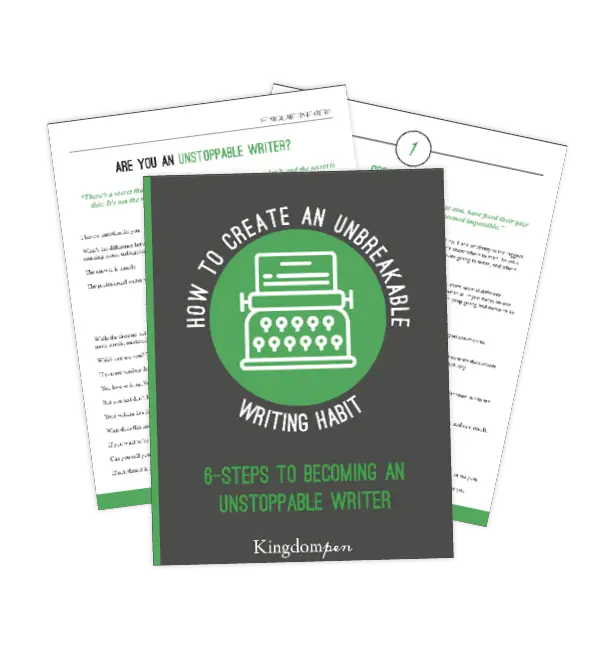Subplots don’t randomly crop up.
Not good ones anyway.
Like the main plot, a subplot must have a purpose and drive an aspect of your story.
Subplots can serve various parts of your story and perform multiple functions simultaneously.
They can raise stakes, increase tension, provide breathing room, create steadier pacing, and develop characters.
In this article, I’ll outline how to use subplots to amplify a story’s emotional impact.
Use Subplots to Broaden Emotions
Many stories, depending on the genre, author, and characters, highlight one or two emotions.
For horror, that emotion is fear.
For thrillers, it’s suspense.
For fairy tales, it’s wonder.
Focusing (intentionally or unintentionally) on one emotion can deepen your story as you write it.
You’ll be forced to feel and think about that emotion page after page.
This ensures that your story follows a single emotional path and doesn’t get frayed by confusing feelings or (much worse) emotional stagnancy.
However, a single emotional track will wear readers down. Eventually, that single emotion will grow old and readers will become bored with your story.
A compelling story is about people, and people have many different emotions.
Subplots can help you develop these diverse feelings without sacrificing the guiding, emotional punch of your plot.
If your plot is full of suspense and breath-holding moments, maybe try a more personal subplot that will tug heartstrings and slow the pace for readers to breathe.
Maybe your subplot could involve keeping a promise to return home for the holidays, searching for a friend in a world of spies, or something along those lines.
If your book is less intense (like a coming-of-age story or a romance), do the opposite. Consider adding explosions (literally or figuratively), danger, and tension.
Maybe the protagonist’s father’s shop is robbed or a strike occurs at the local factory.
Juxtaposing your subplots’ emotions with your main plots’ will expand your story’s emotional range and make it feel more human.
Use Subplots to Deepen Emotion
Some scenes are key to pulling your story off, and the emotions they convey need to be emphasized.
Many of these scenes happen near the ending, like the black moment (just before the climax when everything falls apart for the hero) and the denouement (where everything wraps up after the climax).
When you hit these points, you’ll need to reach a more profound level of emotion than you have in the rest of your novel. These scenes must stand out.
This is where subplots come in.
One way they can enhance the emotions in your story is to have plot lines run chronologically parallel to each other and converge on a pivotal scene at the same time.
For the black moment, you want to kick the dog when he’s down. When everything in the main story blows up and the mentor dies, your hero discovers that his subplot isn’t going well either.
The airport was shut down, so he won’t be home for Christmas. The friend he thought he’d found betrays him for money, power, or survival. His love interest doesn’t love him much because her affection was just a phase.
Compounding your hero’s problems and exploring the same emotion from various perspectives intensifies readers’ experience.
If young readers can’t relate to being away from home on Christmas because they’ve never missed a family holiday, maybe they can empathize with failing a test at school or the family dog going missing.
But wait, there’s more.
Almost everyone knows how it feels to get kicked when they’re already down. When that happens to your character, a powerful emotional connection will form between him and readers.
The same is true for denouements.
Tying off multiple storylines in rapid succession will give readers a feeling of finality, like the book is actually supposed to be over.
Plus, resolving several emotionally conflicting plots establishes the opportunity to create a killer bittersweet ending, if that’s what you’re aiming for.
Use Subplots to Develop Emotionally Rounded Characters
Characters are a reader’s gateway into a story. If you have flat characters, your story’s potential for affecting readers is drastically reduced.
Character development is the bottleneck of emotion in a story; its impact is limited by the depth of your characters.
Let’s break away for a second to talk about people and characters.
People rarely have one pursuit in life.
Life is complex, and if your character is chasing only one goal for the whole story, he’ll seem like a fraud.
Real people have to balance resources, time, and energy (both emotional and physical).
Real people get overwhelmed by the weight of all their goals. Real people have too many irons in the fire.
Subplots enable your characters to display this side of their humanity.
Think of Peter Parker.
He’s Spiderman, sure.
But he’s also Aunt May’s little boy, a high school student striving to keep his grades up, and a guy with a serious crush on the girl at school.
He’s late for everything. When he does show up for class, he’s beat up, exhausted, or on edge. Aunt May is worried, and he can’t (won’t) tell her the truth.
Peter’s subplots feed off of each other to paint a picture of a hero with too much going on.
He’ll never get back on top at this rate, and he’ll probably lose all of his friends as he plunges toward rock bottom. Peter Parker is an over-committed, under-prepared human who really, really needs to catch up on sleep.
I think all of us can relate to that. And once we relate to him, the story’s potential emotional impact is unlocked. Go subplots!
It's All about the Emotions
Of course, there are other ways subplots can enrich your story.
They can aid pacing, provide some healthy foreshadowing, add perspective to a situation, or develop an aspect of your story’s theme.
However, in the end, stories are all about emotion. If your subplot doesn’t infuse any emotion into your story, readers will find it to be dry, and maybe even dull.
Don’t let that happen.
Deepen your characters.
Broaden your emotional impact.
Tell a story that you (and others) will love.
Sound frightening? One plot is a lot to handle on its own, but throwing in second and third plots further complicates things.
If you’re not sure how to implement a subplot that fits in your story, much less propels it as described above, stick around. I’ll be back next month with the tips you’re looking for.



This is really imformative, Brandon. 😀 Thanks. I haven’t explored writing subplots much, so this was new and interesting to me
Cool. I honestly haven’t messed to much with subplots either, so this was an introduction for both of us.
[…] as helpfully defined by our own Brandon Miller in his article on the subject, “Can raise stakes, increase tension, provide breathing room, create steadier pacing, and […]